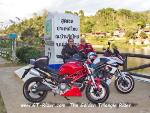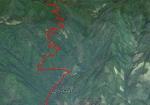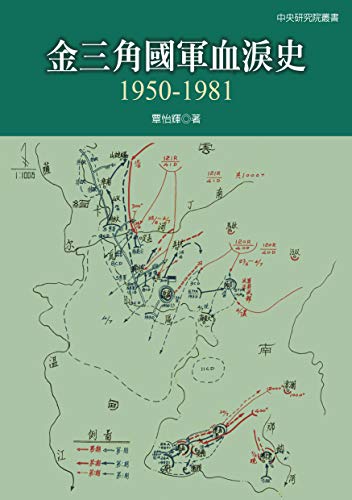A bit of info & a story that mentions Rak Thai.
China’s soft power reaches deep and wide in Thailand
KMT villages have flipped over time from being pro-Taipei to pro-Beijing while new generation of overland migrants arrive in the kingdom
By RICHARD S EHRLICH
MAY 8, 2023
BAN RAK THAI – Rotting weapons, faded battlefield photos, and rough-sketched jungle maps from defeated, anti-communist, US-equipped Chinese Kuomintang (KMT) guerrillas are cherished in this northern border village.
The KMT and China stopped killing each other decades ago. Today, the KMT’s descendants graciously serve China’s fun-seeking tourists, sheltering them in cozy, Chinese-themed hotels and quenching them with locally grown, fermented oolong tea.
KMT families are thankful their victorious former foe is boosting their local economy. The traumatic reversals in fortune on both sides display the way China’s monetized soft power is influencing this Southeast Asian country.
“Some Chinese come here and see these things, and say they are sorry for the way the KMT were treated so hard, years ago,” said Wang Ja Da, gesturing inside his thatch-roofed restaurant at shelves displaying his family’s rusty, decrepit machine gun alongside metal helmets, canteens, ammunition cartridge boxes and other KMT equipment.
The dusty display is dotted with photos of armed, uniformed KMT who did not survive.
“Because of China’s soft power, some KMT Chinese in northern Thailand have gradually shifted their position from being pro-Taipei to being pro-Beijing,” said ThinkChina, a Singapore-based, English-language news site.
China’s soft power appears in other subtle ways.
Many ethnic Chinese-Thai parents – and some non-Chinese Thais – send their children to private Chinese language schools for their first four years to learn Mandarin, preparing for possible careers dealing with Chinese investors, officials and others.
Dozens of Chinese government-funded Confucius Institutes (CIs) operate in Thailand, sponsored worldwide by China’s National Office for Teaching Chinese as a Foreign Language.
Open to the public, they promote Chinese language, culture and festivals, and teach locals to become teachers.
“Through the introduction of CIs, some Thailand companies can find a reliable go-between to facilitate trade with Chinese companies.
“These programs garnered the support of the Thai government, Thai royal family, and local businesspeople in that they equate CIs to a strategic and economic tool,” said the university’s sociology department report.
China-based Huawei’s 5G telecommunications is also penetrating Thailand, welcomed by Thai Prime Minister Prayut Chan-ocha’s administration.
In Bangkok, meanwhile, a new generation of Chinese immigrants has been arriving overland from Yunnan, Sichuan and other landlocked provinces.
These so-called “overland Chinese” or “overland Yunnanese” are a different ethnic trend compared to previous centuries when most Chinese arrived in then-Siam by sea from China’s southeast coast.
Many Thais’ ancestors left China during those centuries of trade and calamities, creating politically and commercially successful Chinese-Thai families.
Those settlers also created Bangkok’s Chinatown 200 years ago along the Chao Phraya River, building “go-down” warehouses and “shophouses” for international imports and exports.
Thailand depended on its ethnic Chinese entrepreneurs to help the country’s economy survive international financial upheavals, especially during the 20th century.
Today, Chinatown’s expensive real estate, and tourist-thronged maze of densely-built neighborhoods, outprice many new arrivals.
Newcomers instead are carving what they hope will become a “new Chinatown” along non-descript, two-lane Pracha Rat Bamphen Road.
These lanes in Bangkok’s Huai Khwang neighborhood offer Yunnan and Sichuan cuisine – hard to find among Chinatown’s mostly Teochew, Hokkien, Hakka and Cantonese restaurants.
Arriving Chinese immigrants and tourists are also attracted by the neighborhood’s less expensive hotels, apartments and offices, enabling them to do business, intermarry and study – conveniently near China’s embassy.
Another form of Beijing’s soft power is through its government-controlled People’s Daily media supplements, which occasionally appear in the English-language Bangkok Post and inevitably coo about China’s benevolent, practical, peaceful, high-tech and profitable plans and policies.
Amid the ongoing, often ephemeral, soft power and propaganda, the Pentagon is concerned which side Thailand – a war-tested treaty ally – will support if a US-China war erupts in the region over Taiwan or the South China Sea.
Bangkok tries to project a neutral stance between the two countries, hoping all sides may benefit, and enjoys close relations with both.
Not all soft power, meanwhile, is working to the advantage of China or the US.
“The two aspects of soft power that come immediately to mind concern American products and Chinese tourists,” said Benjamin Zawacki, Bangkok-based American author of “Thailand: Shifting Ground Between the US and a Rising China.”
“But while Thais overwhelmingly consume American products – Starbucks coffee, Facebook, Marvel movies, Nike sneakers, Taylor Swift – and criticize Chinese tourists as being disorderly, it is hardly clear that such raises Thai public, or elite, opinion about the US or lowers it about China,” Zawacki said in an interview.
Nor does history. When Chinese communist leader Mao Zedong achieved victory in 1949, most anti-communist KMT fled to Taiwan, led by General Chiang Kai-shek and his seductive, English-speaking wife who wooed Washington to finance his Kuomintang National People’s Party.
Washington also backed a trapped KMT “Lost Army” comprised of 93rd Division stragglers who retreated southwest across the border into Myanmar [then known as Burma] near Thailand’s frontier.
From makeshift KMT bases inside Myanmar, the rebels launched futile cross-border assaults into southern China’s Yunnan province during 1949–61, aided by the Central Intelligence Agency (CIA).
“This radio is from the Americans,” Mr. Ja Da said, indicating a green rectangle of dust-covered, dial-studded, antique tech.
“My father was a KMT fighter. I was too young, so I was radio messenger, running on foot from radio towers to wherever the KMT was, to deliver the messages,” he said, because the KMT lacked enough portable “military wireless phones.”
In 1950, Thailand’s then-police chief, Police General Phao Siyanon, “allowed CIA planes to refuel in Thailand, and personally transported the first shipment of arms to the [KMT] Nationalists in Burma, bordering Yunnan,” Zawacki wrote in his book.
“Three invasions were attempted through August 1951.” In 1956, “Thailand also accused the Nationalists — still assisted by the CIA — of illegally obtaining weapons and funds,” Zawacki wrote.
Some KMT smuggled opium sap grown in Myanmar’s Shan state – the heart of the narcotic-rich Golden Triangle where the porous borders of Thailand, Myanmar and Laos meet.
Armed KMT mule convoys guarding heavy bags of opium – strapped to saddles of wood, leather, and canvas – slid into northwest Thailand’s chunk of the Golden Triangle.
China convinced Myanmar to jointly oust the KMT.
So the rebels and their families fled here to Ban Rak Thai – less than one mile from Myanmar – and other northern Thai mountain villages in the 1950s and early 60s.
Opium smuggling continued and poppy growing spread in the steep mountains of northwest Thailand’s chunk of the Golden Triangle. Eventually, Thai officials instructed the estimated 200 KMT families to grow tea and other legal, cool-climate crops.
In exchange, Thailand allowed the KMT to settle, initially to guard the region against suspected Communist Party of Thailand members and subversive minority ethnic tribes during the 1960s and 70s.
Today, Thailand’s tourism industry touts 1,800-meter-high Ban Rak Thai as a nostalgia-themed echo of the KMT’s long-lost Yunnan province.
Tourists from Beijing, Shanghai and elsewhere marvel at quaint, mock-vintage, stone architecture themed to resemble a cute portrayal of Yunnan’s traditional villages.
KMT families also own plantations around Ban Rak Thai, supplying ubiquitous tea stalls.
An estimated 200,000 Chinese with Yunnan origins now live in more than 100 villages scattered across the northern provinces of Chiang Rai and Chiang Mai, plus here in Mae Hong Son province.
Richard S Ehrlich is a Bangkok-based American foreign correspondent reporting from Asia since 1978. Excerpts from his two new nonfiction books, “Rituals. Killers. Wars. & Sex. — Tibet, India, Nepal, Laos, Vietnam, Afghanistan, Sri Lanka & New York” and “Apocalyptic Tribes, Smugglers & Freaks” are available here.
An interesting book for some of us who may be interested in the history & some of the region's characters over time?
Source:
China’s soft power reaches deep and wide in Thailand
See also
Dozens of villages in northern Thailand are home to veterans and descendants of a unit of the Nationalist Army, which lost to Mao in 1949.

www.nytimes.com
Qin Yihui 覃怡輝 Taibei: Academia Sinica and Lianjing Press, 2009. 480 pp. Reviewed by Dr. Chang Wen-chin, Associate Research Fellow, Academia Sinica, Taiwan. The story of the Chinese Nationalist (Kuomintang or KMT) forces entrenched in Shan State of Burma and northern Thailand from the 1950s to...
www.harvard-yenching.org




























